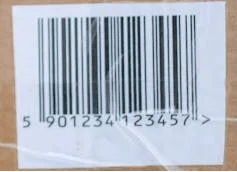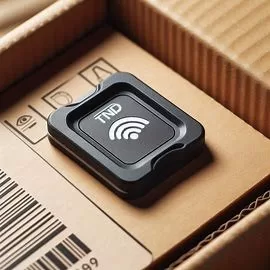Have you ever wondered how your metro card works, how contactless payments are made, or how libraries manage to keep track of thousands of books? Behind these everyday tasks lies an incredible technology known as RFID, or Radio Frequency Identification. Today, we're going to take a deep dive into the fascinating history of RFID. From its origins in the chaos of World War II to its pervasive role in modern life, the journey of RFID is a tale of innovation and evolution.
The Ancestors of RFID
While RFID (Radio-Frequency Identification) technology feels futuristic, its story has surprisingly deep roots. Here's a look into some ingenious inventions from the past that paved the way for RFID's development:
Clay Tokens (8000 BC) :
They were small, flat discs made of baked clay, often bearing simple markings or impressions. These weren't just lumps of soil – they were some of the earliest tools for tracking ownership and quantity of goods in Mesopotamia, a cradle of civilization. Archaeologists believe these tokens might have represented specific quantities of goods, like a certain number of sheep or packets of grain. Alternatively, they could have served as ownership symbols for valuable items like pottery or tools. It is like a clay token with a specific symbol pressed into it, acting like an ancient brand name, indicating who owned a particular tool or jar.

Tally Sticks (19th Century AD) :
These simple tools, often made from wood, were used for basic record-keeping and counting across various cultures throughout history. Tally sticks had notches or markings carved into them, each notch representing a specific quantity. This allowed people to keep track of items, livestock, or even days. While not as sophisticated as other methods, tally sticks demonstrate the early human desire to develop systems for quantification and record-keeping.

Barcodes (1930s) :
These familiar black and white stripes are a more recent innovation compared to clay tokens and Tally sticks. Invented in the 1930s, barcodes completely transformed product identification. Barcodes work by translating information into a pattern of stripes with varying widths and spacings. Each stripe combination encodes a specific number or letter, allowing a scanner to translate the pattern into readable data. This was a significant growth, enabling faster and more accurate identification of products compared to manual methods.While barcodes were a game-changer, they have limitations. They require a line-of-sight scan to function, and their data storage capacity is limited. These limitations paved the way for the development of RFID technology, which offers several advantages like faster reading speeds, no line-of-sight requirement, and the ability to store much more information.
These early methods, though simple, all served a crucial purpose – identifying and tracking objects. They represent a fascinating journey of human ingenuity, constantly seeking better ways to manage and categorize the world around us. As technology progressed, so did the sophistication of these methods, ultimately leading to the development of RFID technology, which offers a powerful and versatile tool for identification in the modern world.

The Birth of RFID: World War II Era :
The story of RFID begins during World War II, a time of great innovation driven by the need for new technologies. While not directly leading to modern RFID, this era played a crucial role in setting the stage for its development.
In the early 1940s, the need for identifying friend or foe (IFF) became crucial. The Allied forces developed a system using radio waves to distinguish friendly aircraft from enemy planes. This early form of RFID was a game-changer in aerial warfare, ensuring that friendly fire incidents were minimized. The IFF system worked by placing transponders on Allied aircraft, which would respond with a specific signal when queried by radar stations, thereby identifying them as friendly and preventing accidental attacks.
Dr. Léon Theremin, a Russian inventor, created a device in 1945 known as the "listening device," which was used by the Soviet Union to spy on the U.S. Embassy. This device, though not an RFID tag, used passive electromagnetic waves to transmit information. It operated without an internal power source, receiving and modulating radio waves from an external transmitter to relay audio information. This principle of passive communication laid the groundwork for future RFID technology, where passive RFID tags would later use similar methods to transmit data without needing an internal power source.

The 1970s: Commercial Beginnings :
Fast forward to the 1970s, a period of booming technological advancements. This decade witnessed RFID technology begin its move beyond military use and enter the commercial arena. The first patents for RFID technology were filed during this time. While Charles Walton secured a patent in 1983 that used the term "Radio-Frequency Identification" for the first time, other important advancements occurred earlier. Notably, Mario Cardullo's patent in 1973 described a passive transponder with memory, a concept more technically similar to the core functionality of modern RFID tags. Cardullo's innovation was very crucial as it introduced the idea of a passive RFID tag that could store data, making it a precursor to the advanced RFID systems we use today. This period marked the beginning of RFID's transition from theoretical concepts to practical applications, setting the stage for its widespread adoption in various industries.
The 1980s and 1990s: Expansion and Standardization :
The 1980s saw RFID technology expanding into new sectors globally. One of the early commercial applications was livestock tracking, particularly in countries with large agricultural industries like the United States and Australia. Farmers in these countries used RFID tags to monitor their herds more efficiently. RFID tags allowed for the identification and tracking of individual animals, improving breeding programs, health monitoring, and overall farm management. During this period, the first electronic toll collection systems were introduced in countries such as the United States and Norway, modernizing road transport by enabling vehicles to pass through toll booths without stopping. This innovation greatly reduced traffic congestion and streamlined toll collection processes.
In the 1990s, RFID technology began to mature. The establishment of standards was a significant milestone, with organizations like the International Organization for Standardization (ISO) and the American National Standards Institute (ANSI) working to create global benchmarks. These standards ensured interoperability between different RFID systems and devices, facilitating broader adoption. This period also saw the advent of the Electronic Product Code (EPC), a unique identifier for tracking products in the supply chain, developed by the Auto-ID Center at MIT. The EPC enabled more precise tracking of goods from production to retail, significantly improving inventory management, reducing theft, and improving supply chain efficiency. As a result, RFID technology became an indispensable tool for businesses worldwide, paving the way for its integration into various industries.
The 2000s: RFID Everywhere :
Entering the 21st century, RFID technology started becoming much more common across various sectors. Retail giants like Walmart adopted RFID for inventory management, significantly improving their supply chain efficiencies. By tagging individual items with RFID, these companies were able to track their products in real-time, reduce inventory losses, and streamline restocking processes. This technological shift not only paved way for operational efficiency but also improved customer satisfaction by ensuring better product availability.
Libraries worldwide began using RFID tags for book tracking, transforming the borrowing and returning process. With RFID-enabled systems, patrons could check out multiple books simultaneously without manually scanning each one, making library visits quicker and more convenient. Additionally, RFID technology helped libraries manage their collections more effectively, reducing the incidence of lost or misplaced books.
The development of Near Field Communication (NFC) in the early 2000s, a subset of RFID, further broadened its applications. NFC technology enabled smartphones to communicate with other devices in close proximity, paving the way for innovations like mobile payments, contactless ticketing, and smart posters. Mobile payment systems like Apple Pay and Google Wallet leveraged NFC to allow users to make secure transactions with just a tap of their phones. Similarly, NFC-enabled tickets allowed entry processes at events and public transportation, enhancing user convenience. Smart posters equipped with NFC chips provided interactive experiences, allowing users to access additional content or promotional offers with a simple tap of their smartphones. These advancements demonstrated the versatility of RFID technology and its capacity to enhance everyday experiences in multiple facets of life.
Modern-Day RFID: A Technology for the Future :
Today, RFID is an integral part of our daily lives. Its applications are diverse, ranging from logistics and healthcare to security and entertainment. RFID tags are used in everything from tracking goods in a warehouse to preventing theft in retail stores. In healthcare, RFID is used to track patients, manage equipment, and ensure the proper administration of medications.
The Internet of Things (IoT) has further amplified the importance of RFID. By integrating RFID with IoT, businesses can achieve unprecedented levels of automation and data collection. Smart refrigerators that can reorder groceries when they run low and intelligent supply chains that monitor products from factory to shelf are now a reality, thanks to this combination.
Looking to the future, the potential for RFID seems limitless. With advancements in materials science, we might soon see RFID tags that are even more smaller, more flexible, and even printable. These tags could be embedded in almost anything, from food packaging to wearable devices, making our world even more interconnected.
Wrapping Up :
And there we have it, From its humble beginnings in wartime to becoming a symbol of modern technology, the journey of RFID is truly fascinating. As we continue to innovate and integrate RFID into various aspects of our lives, it’s exciting to think about what the future holds for this remarkable technology.
So next time you, tap your contactless payment, or scan your library book, take a moment to appreciate the history and evolution of RFID technology that makes these everyday conveniences possible.
